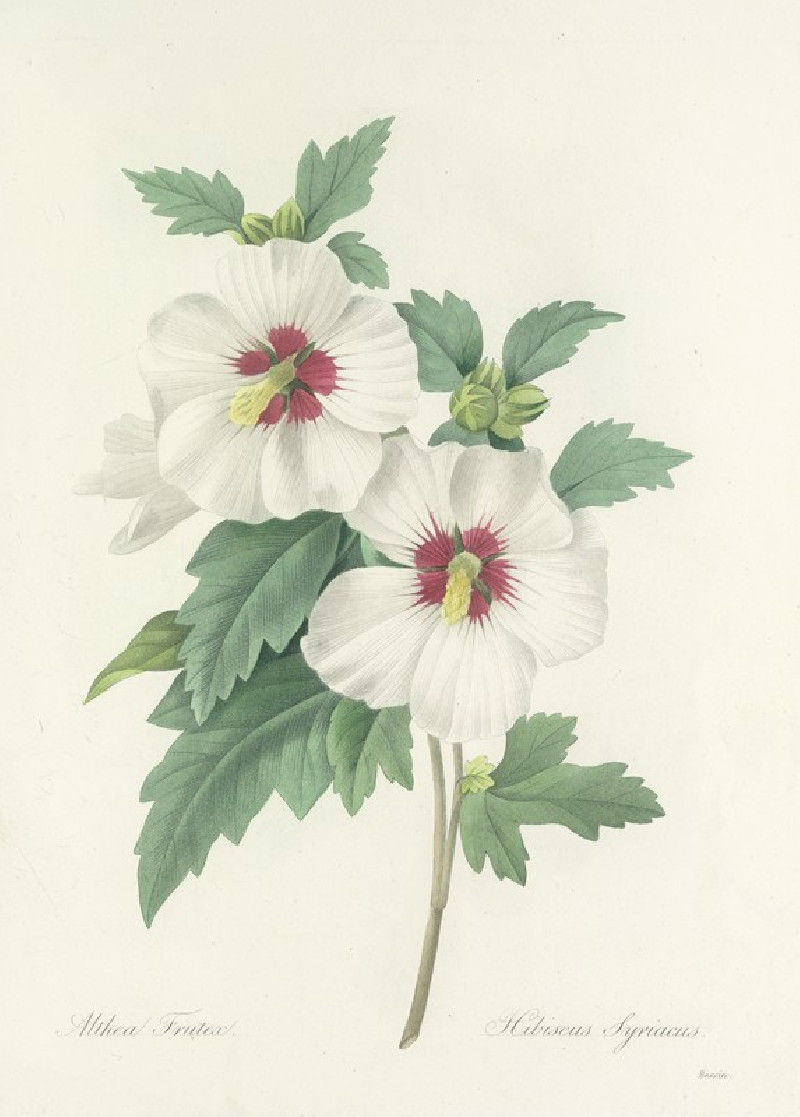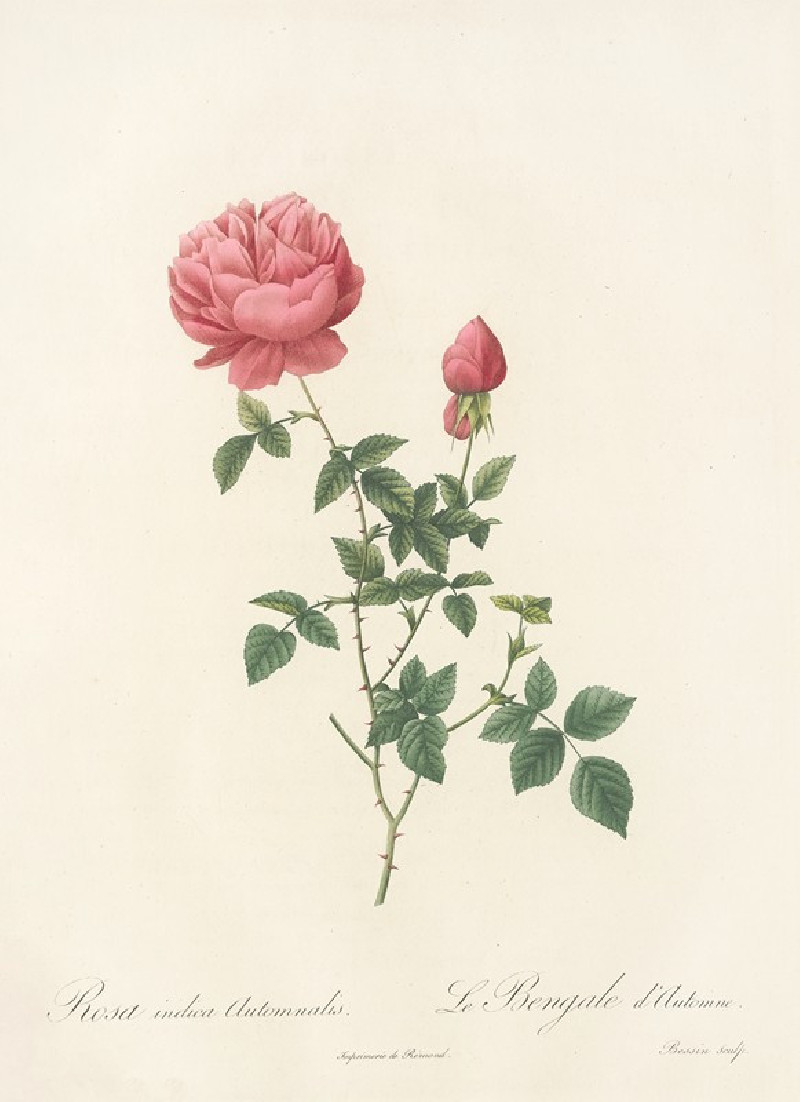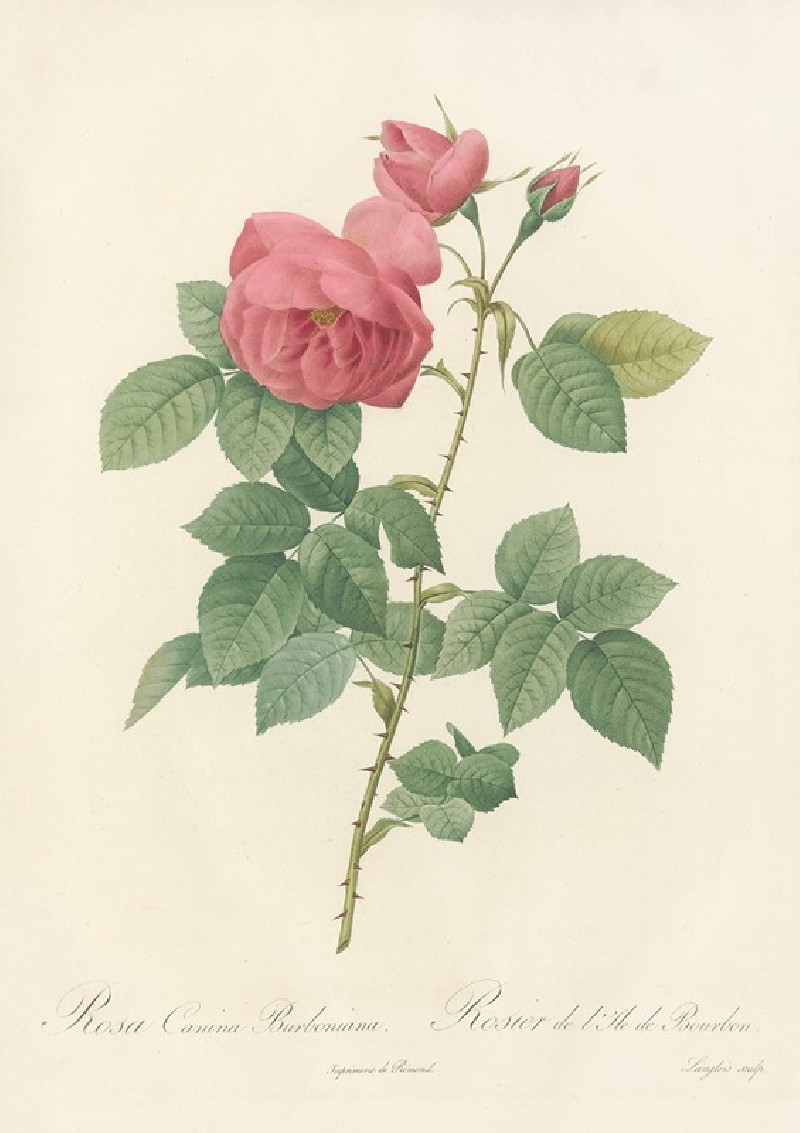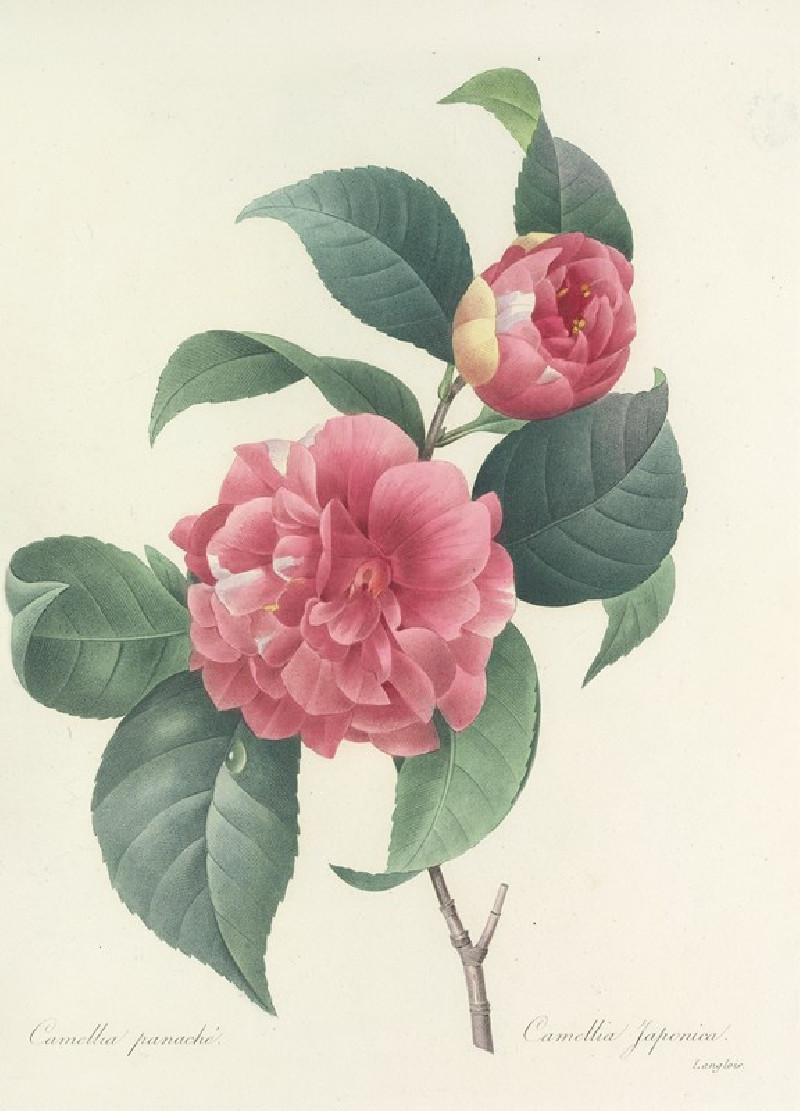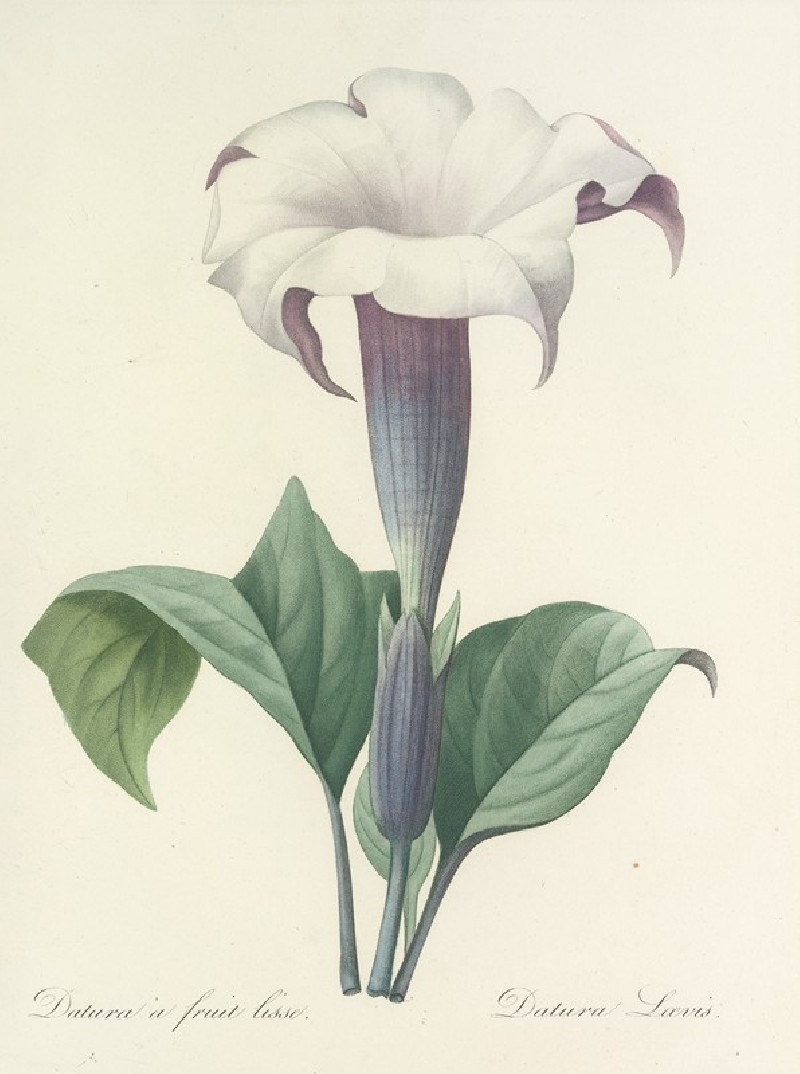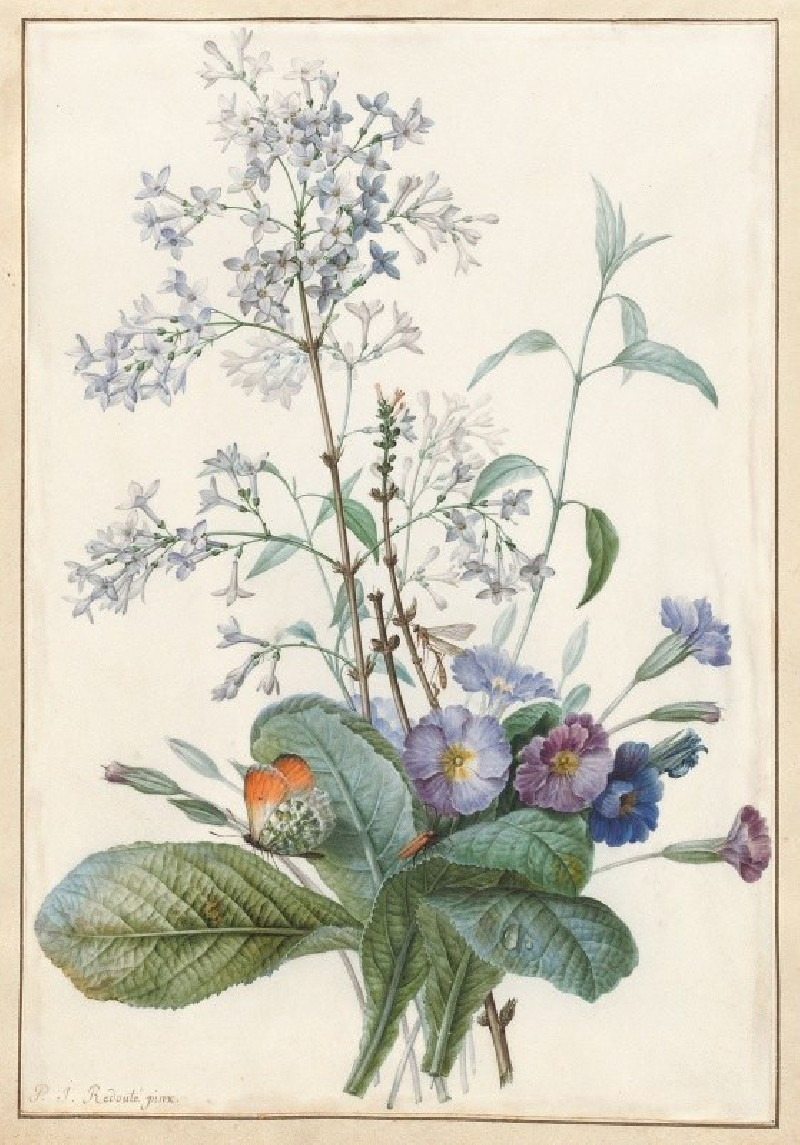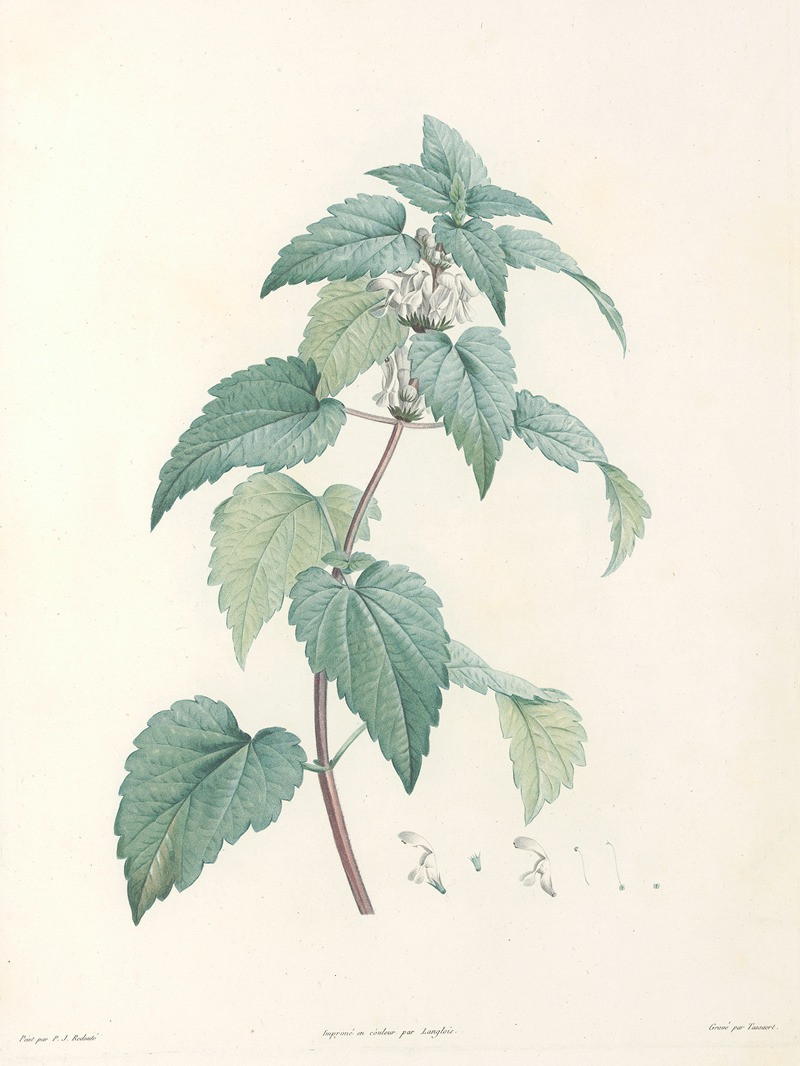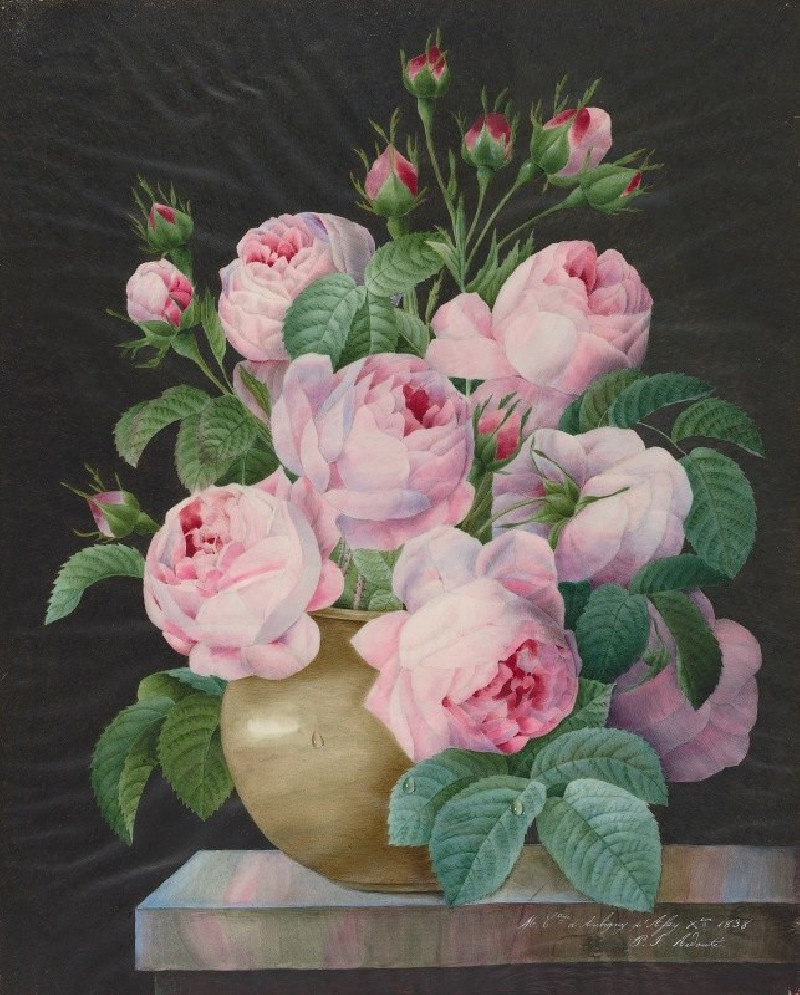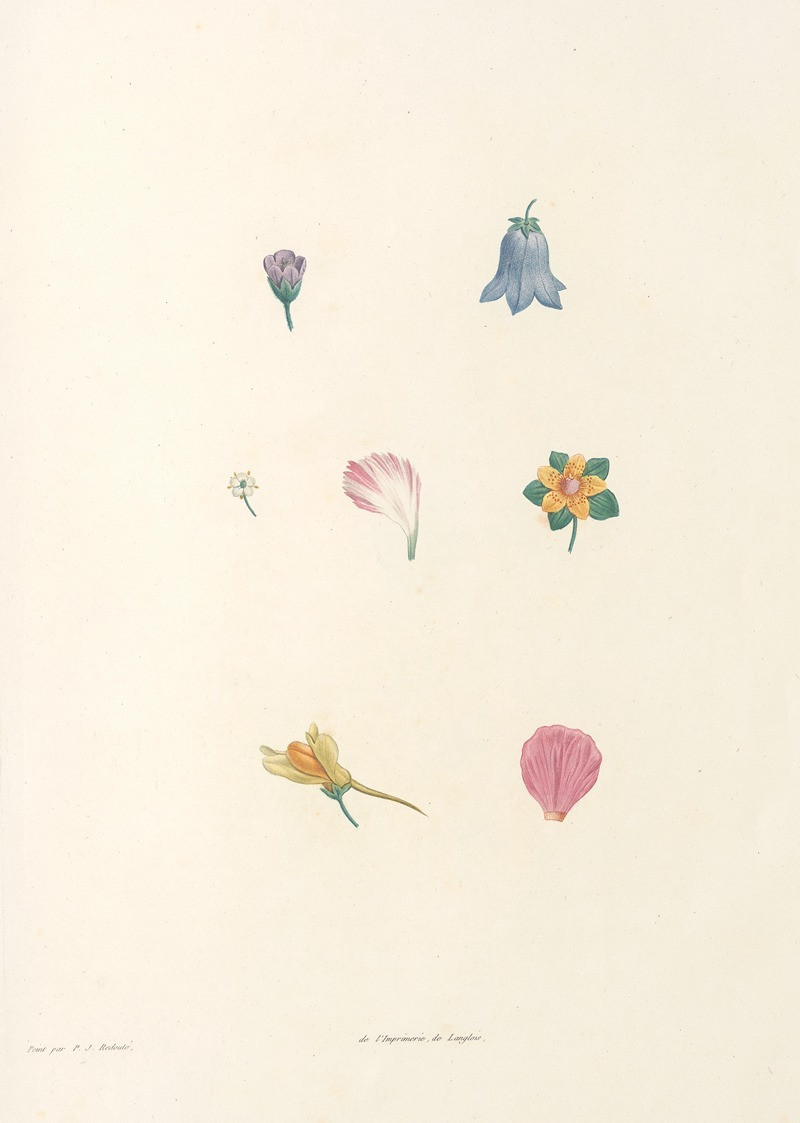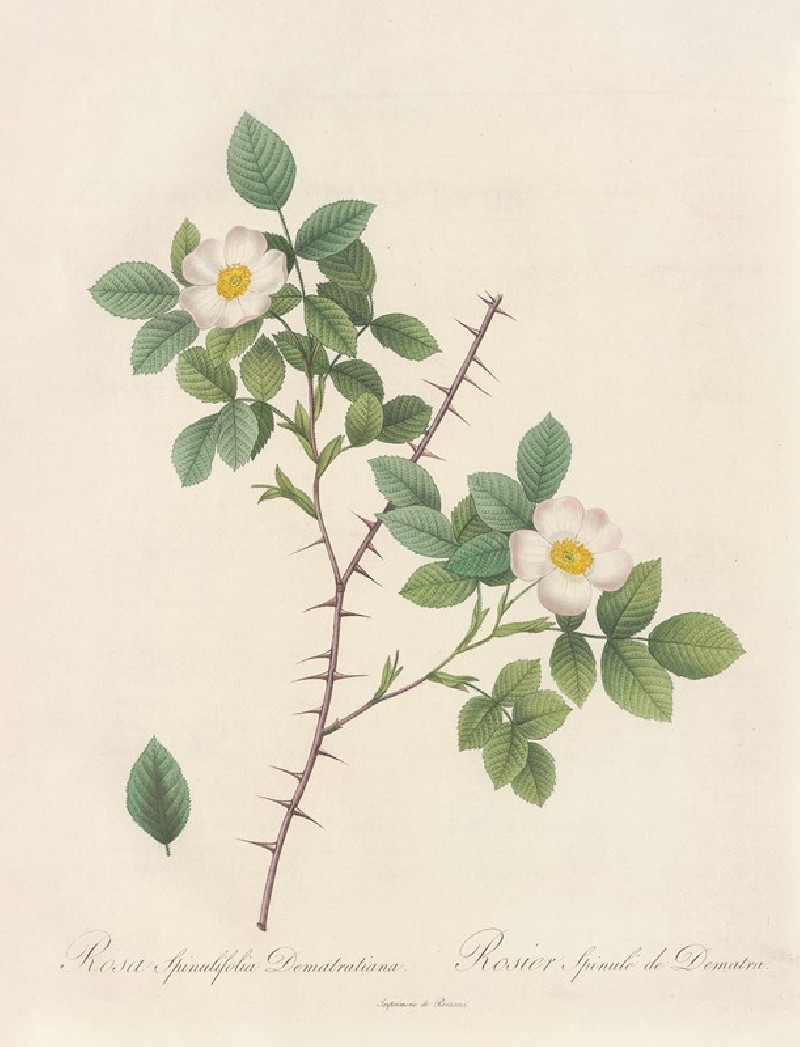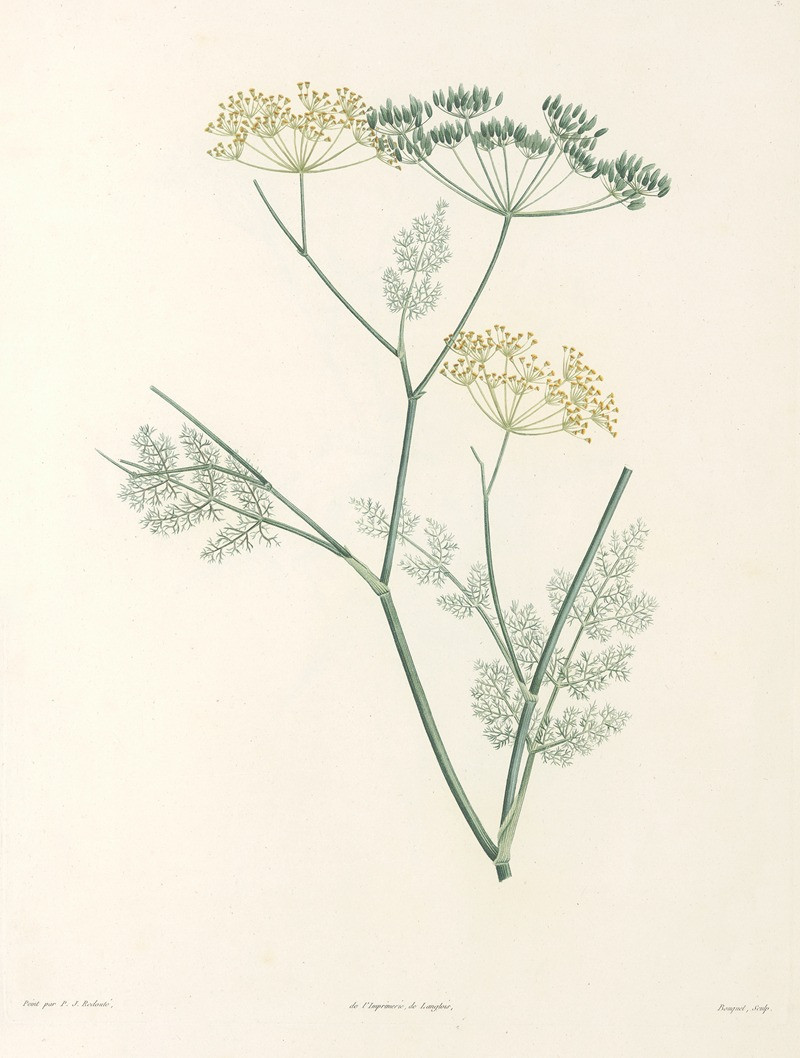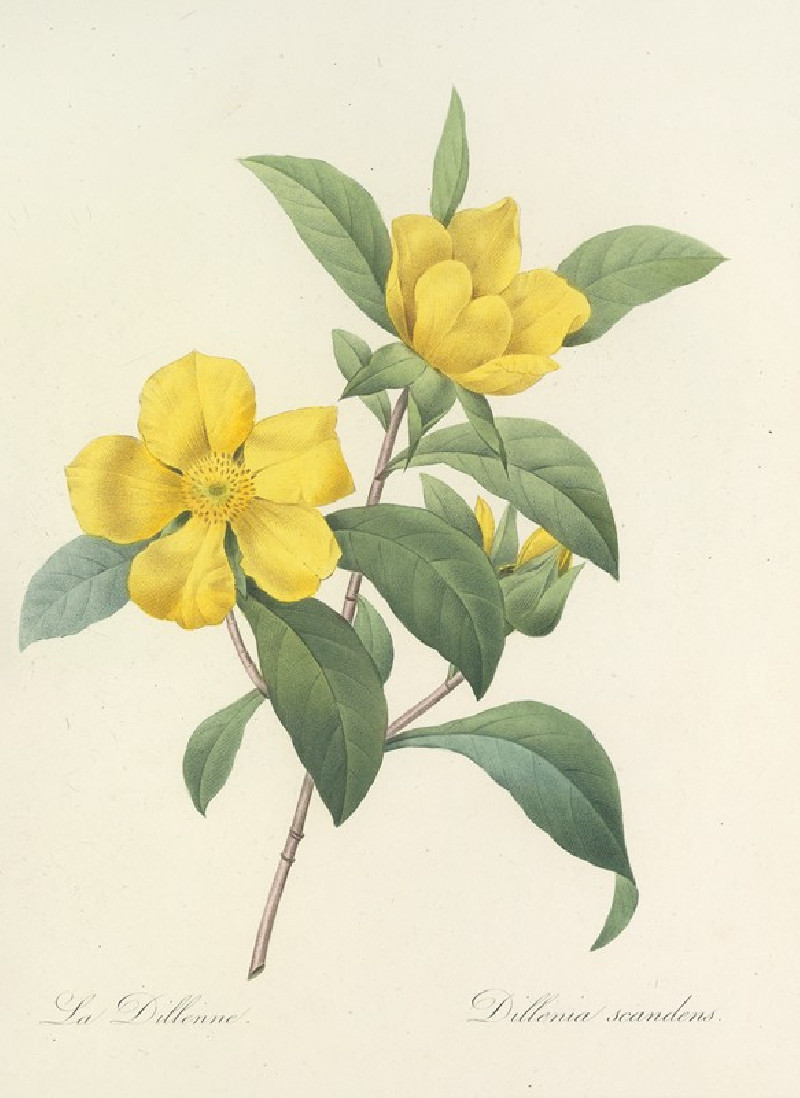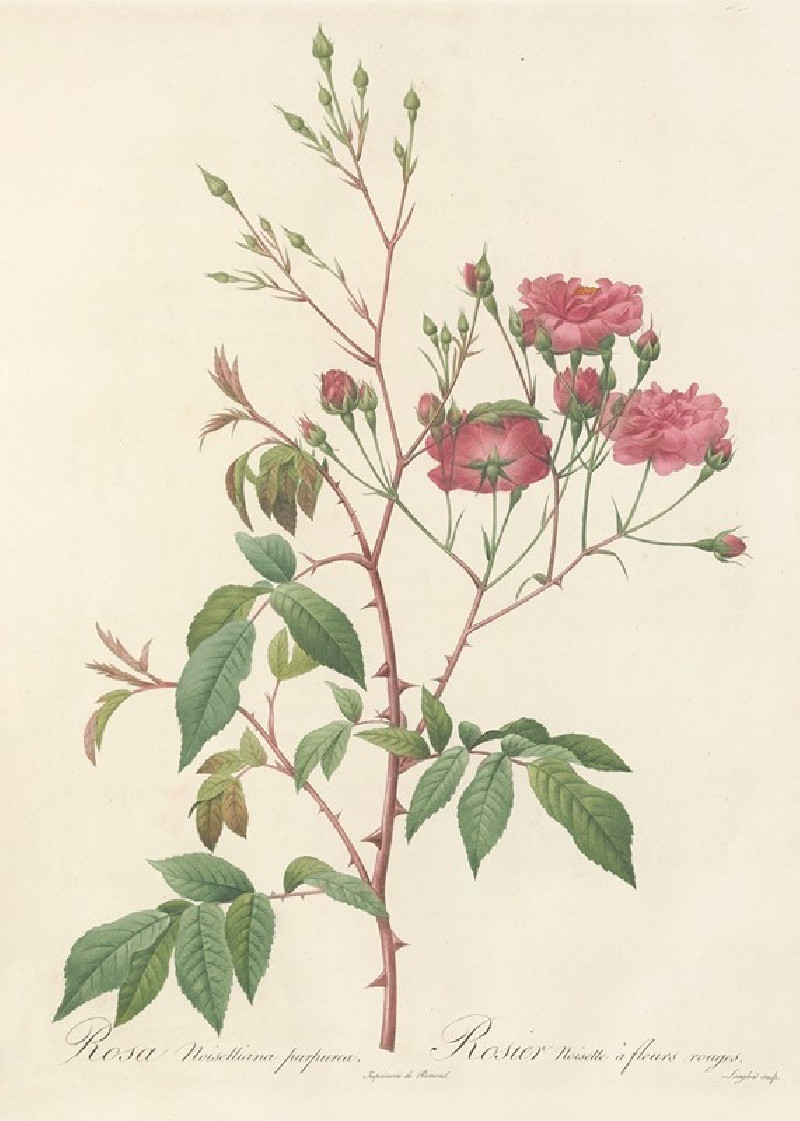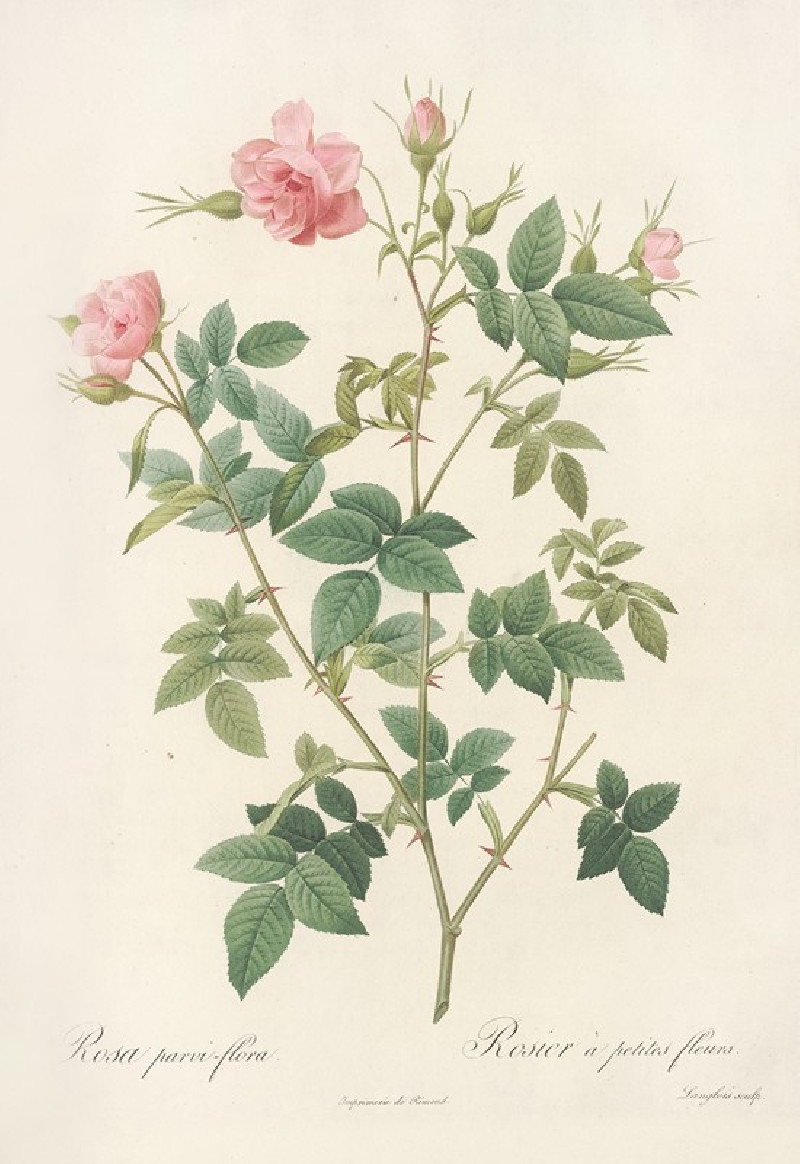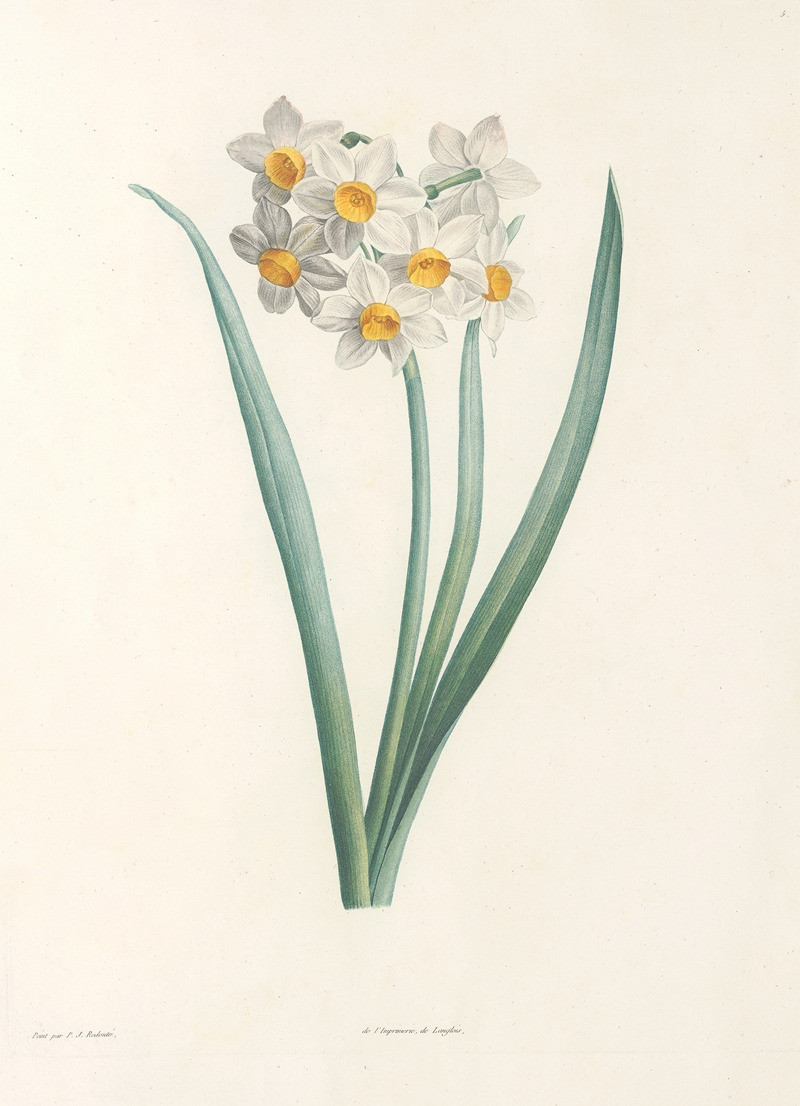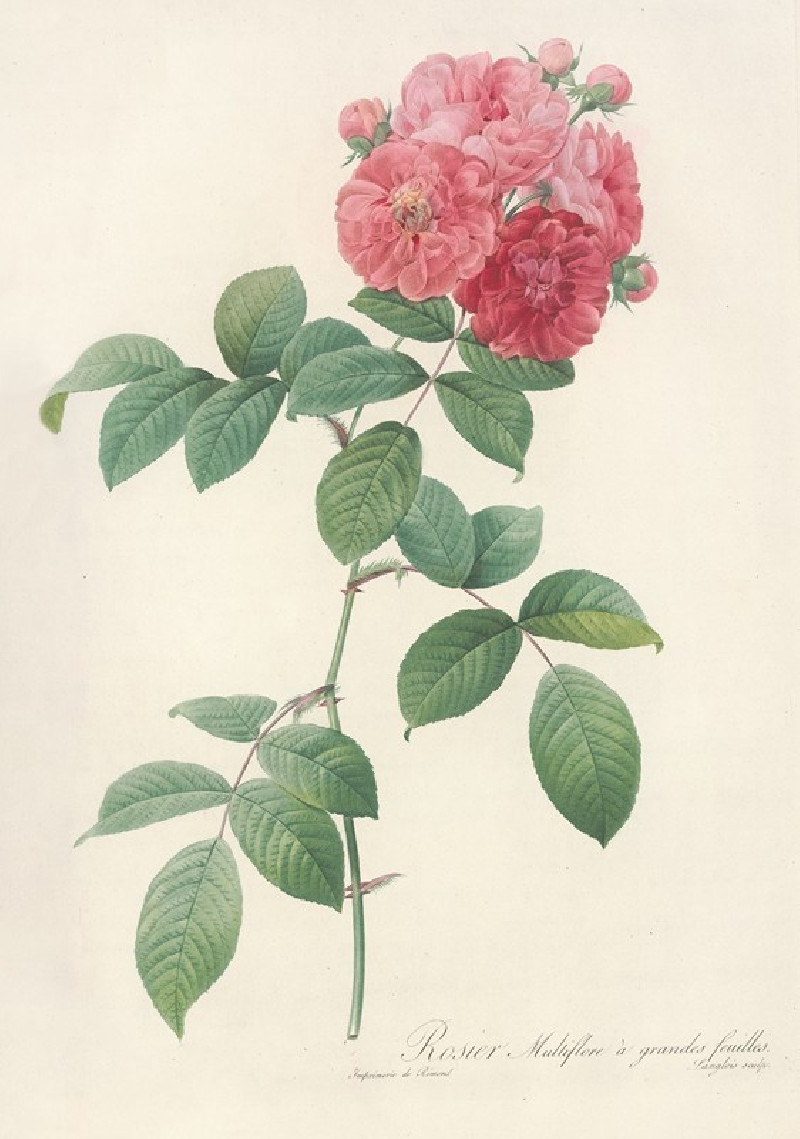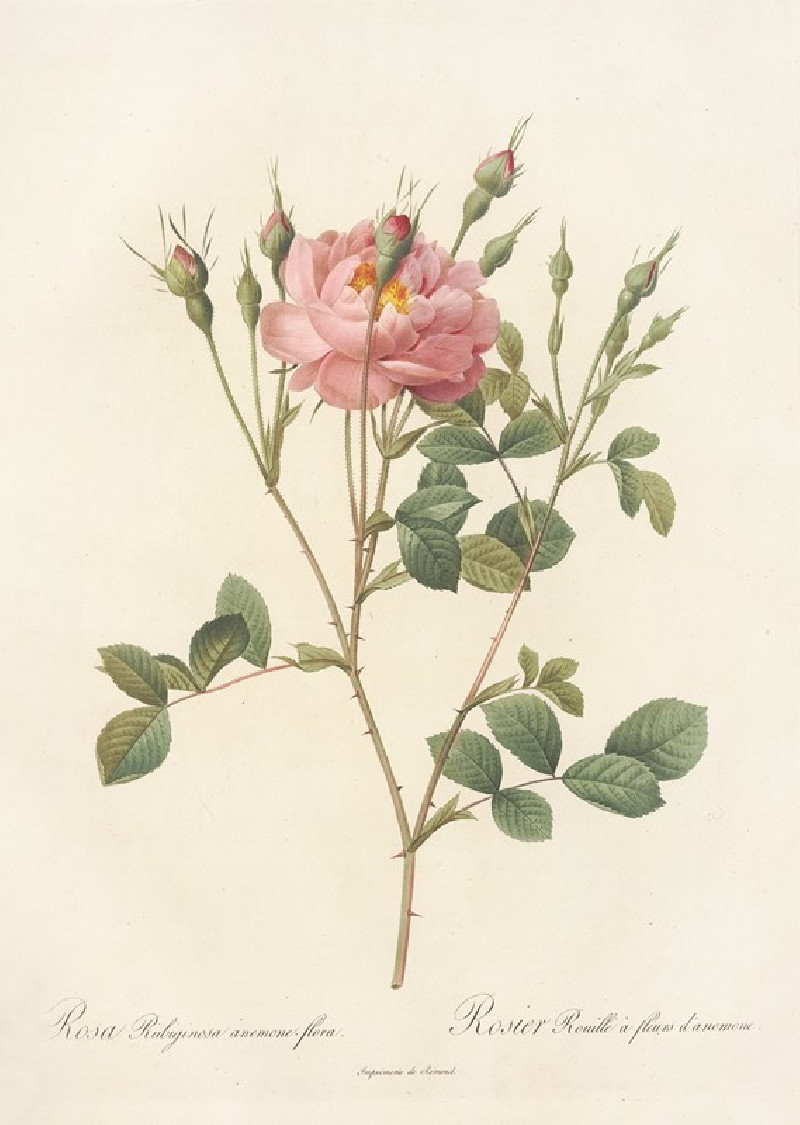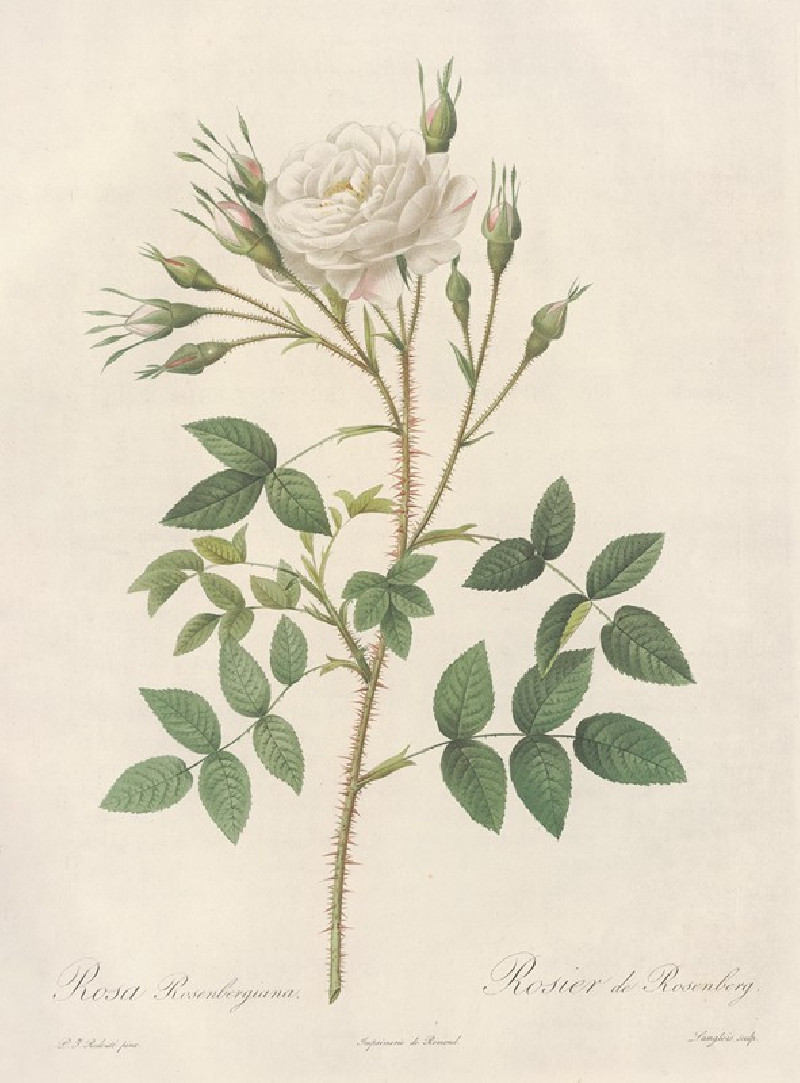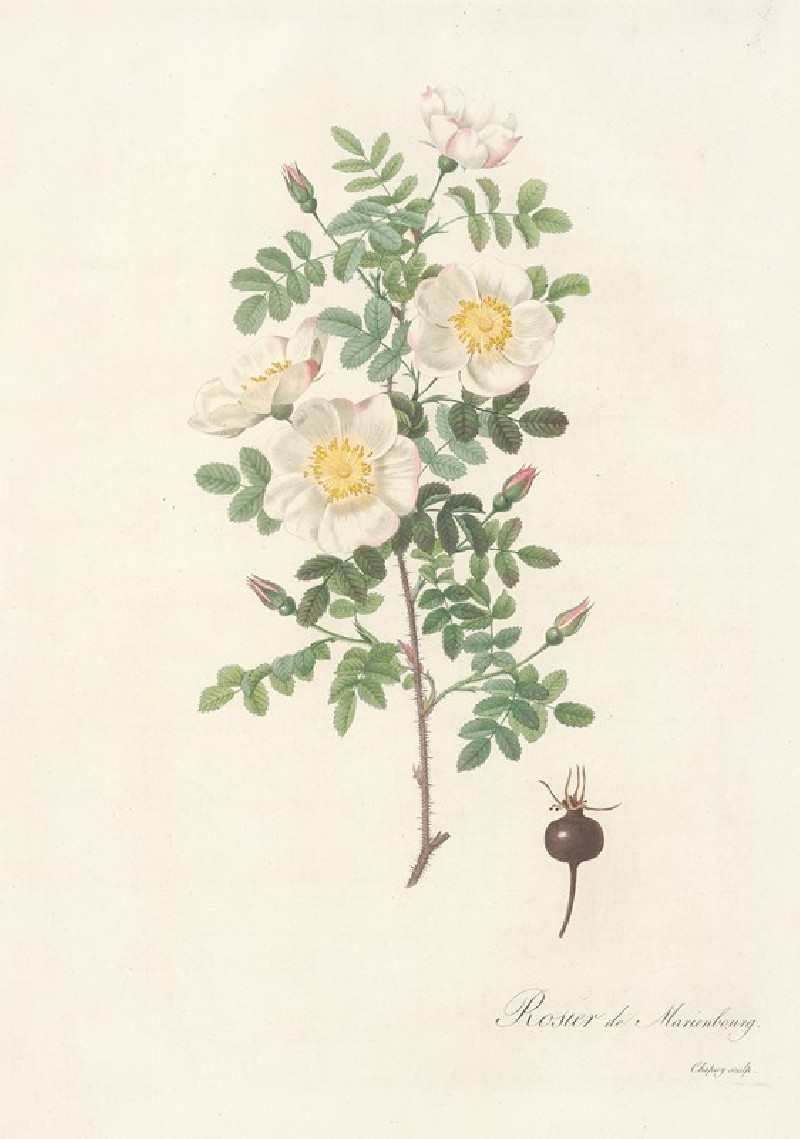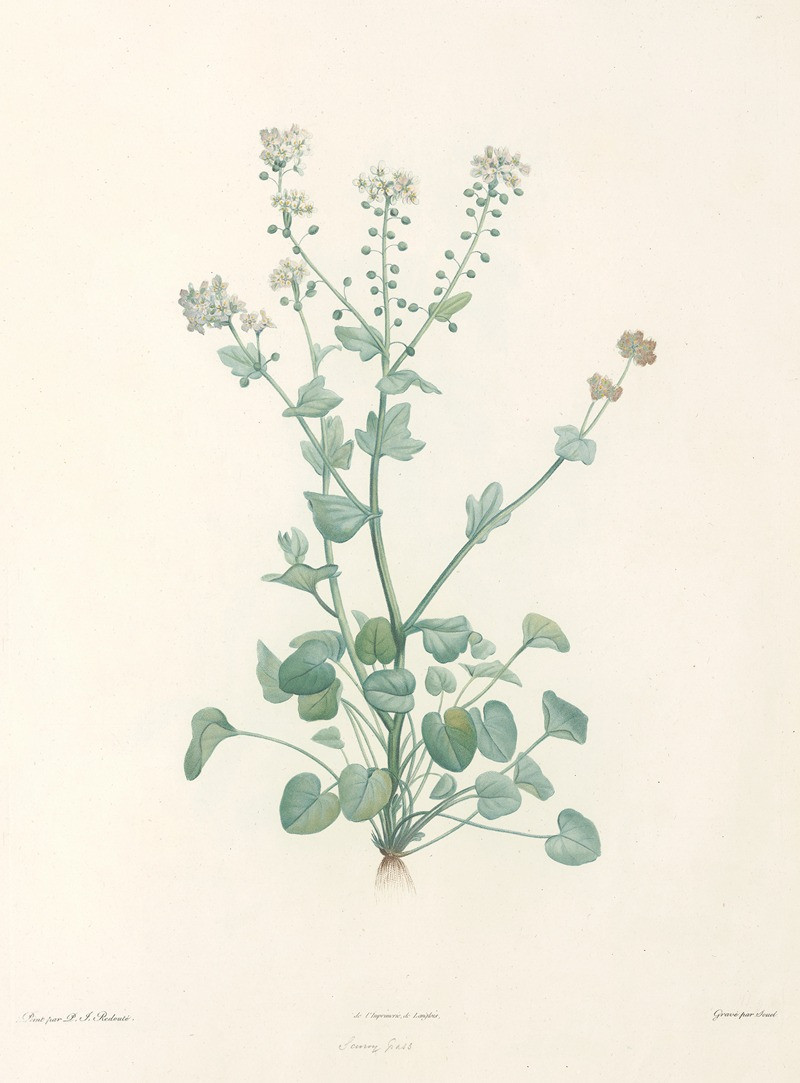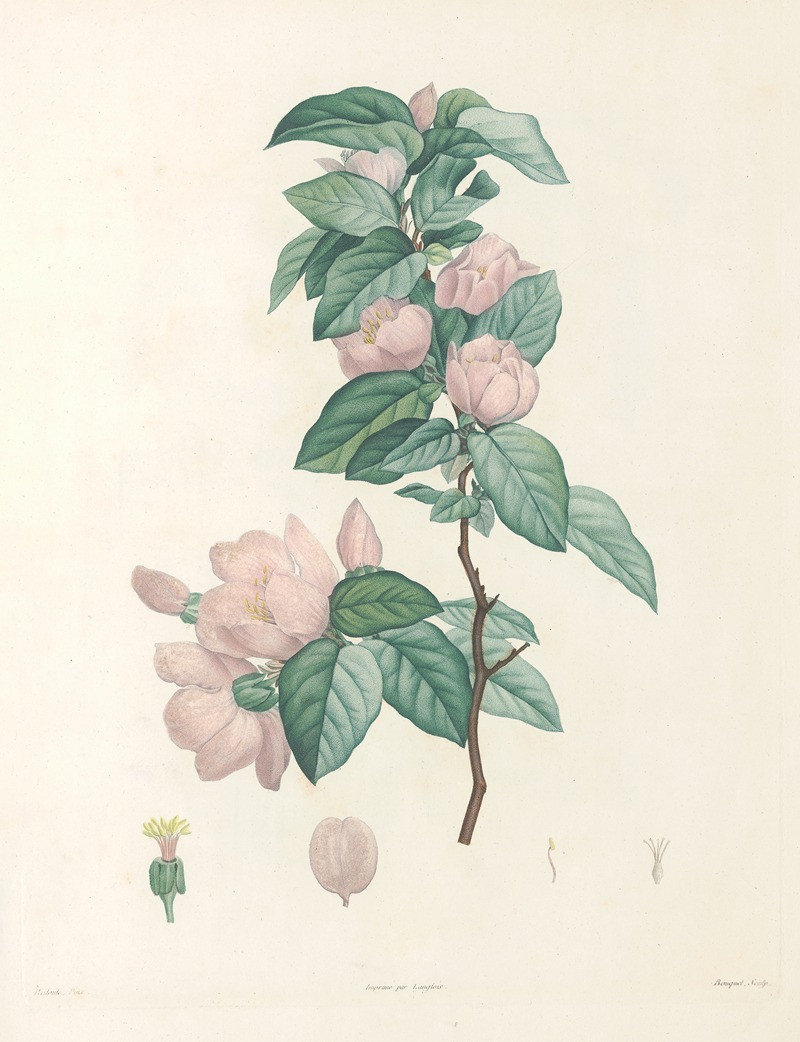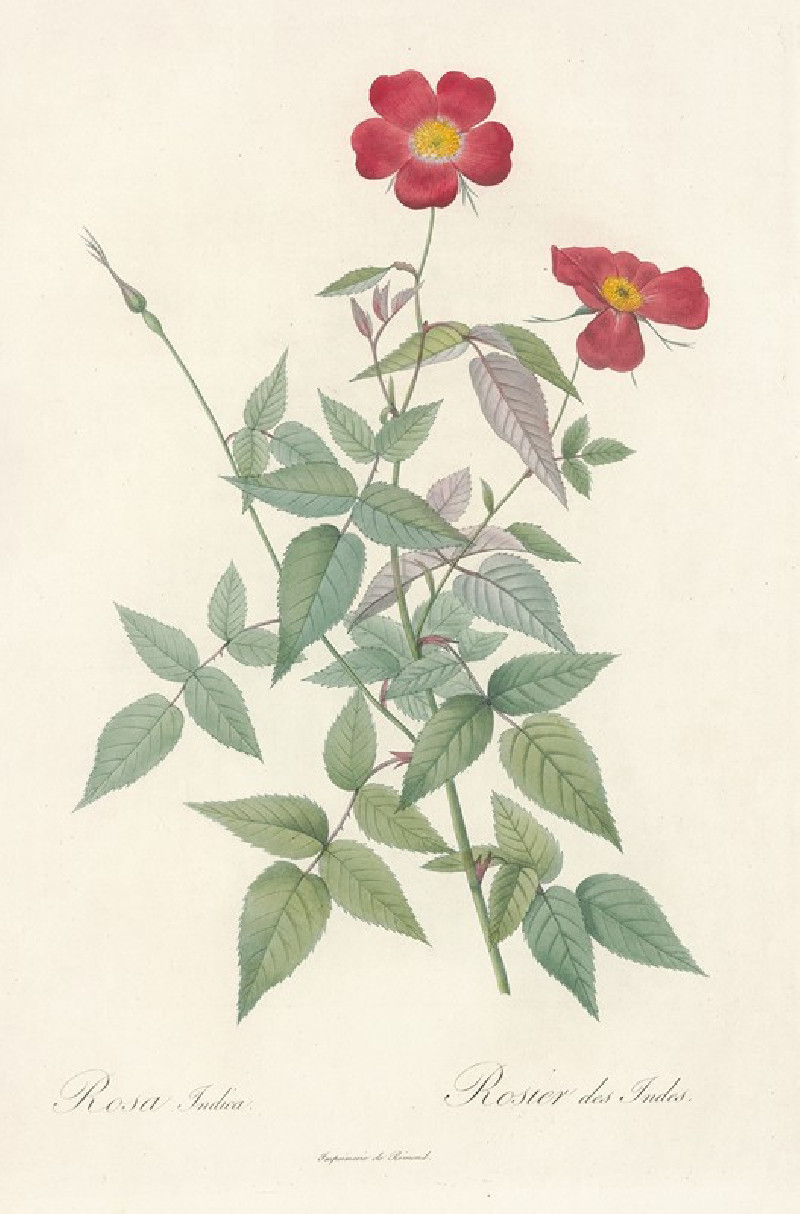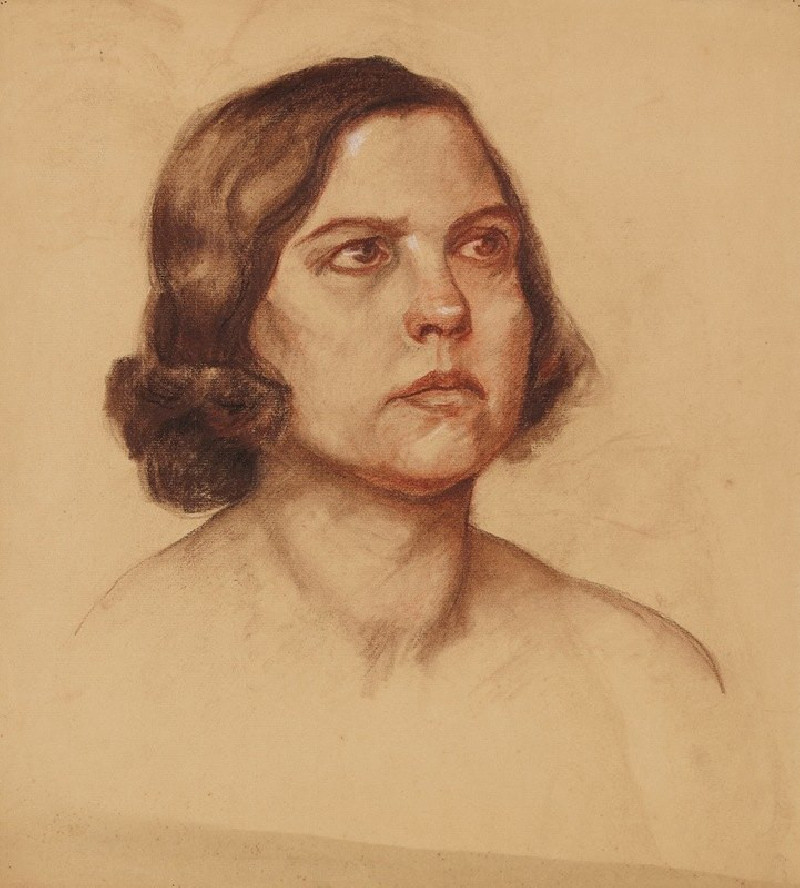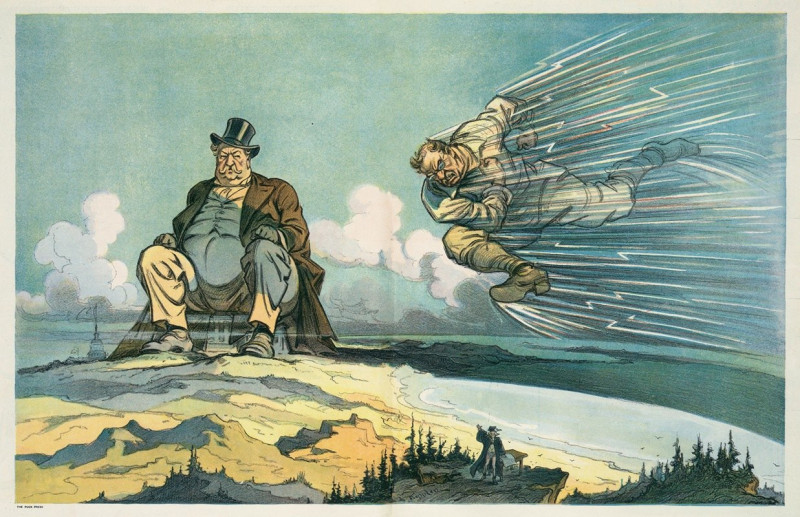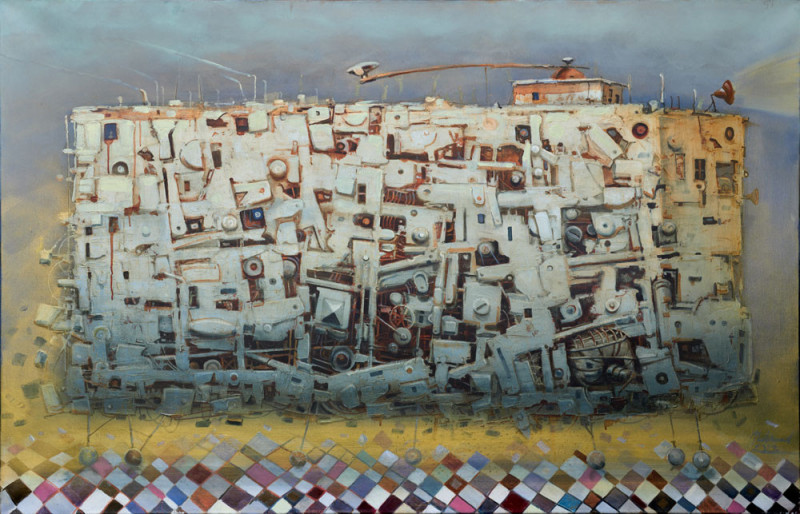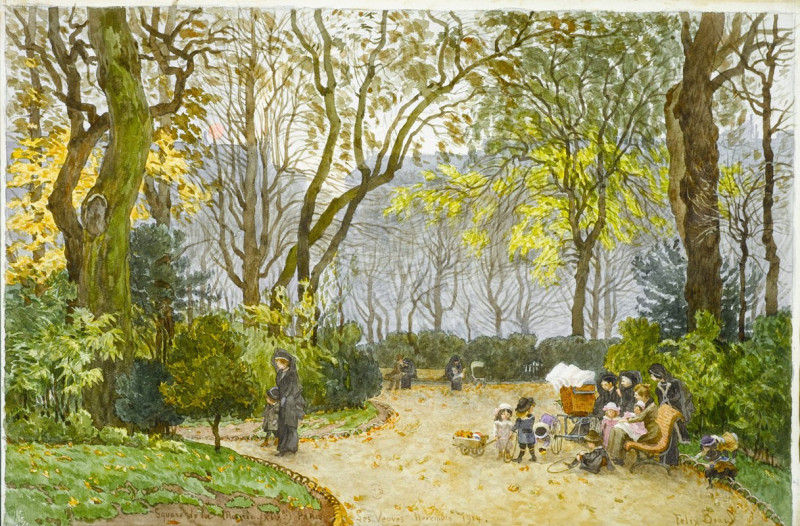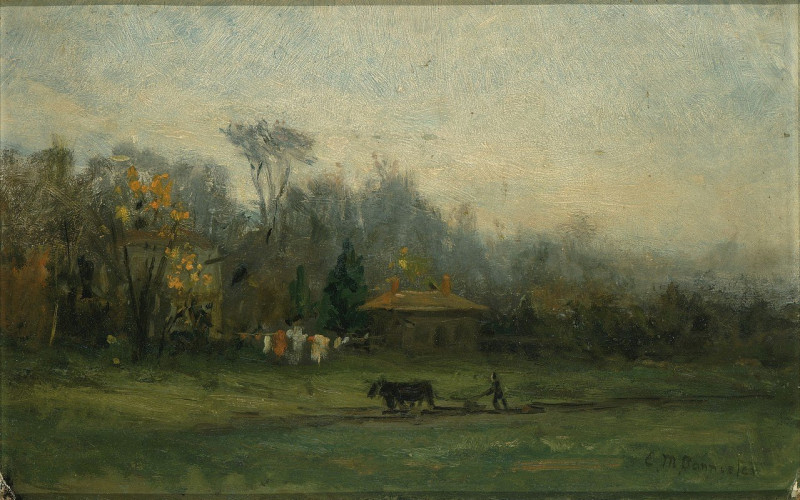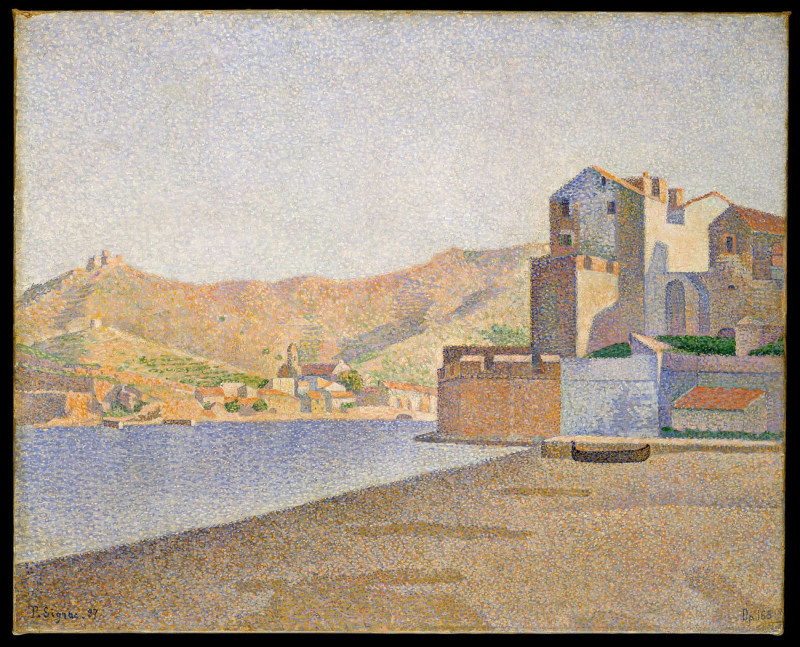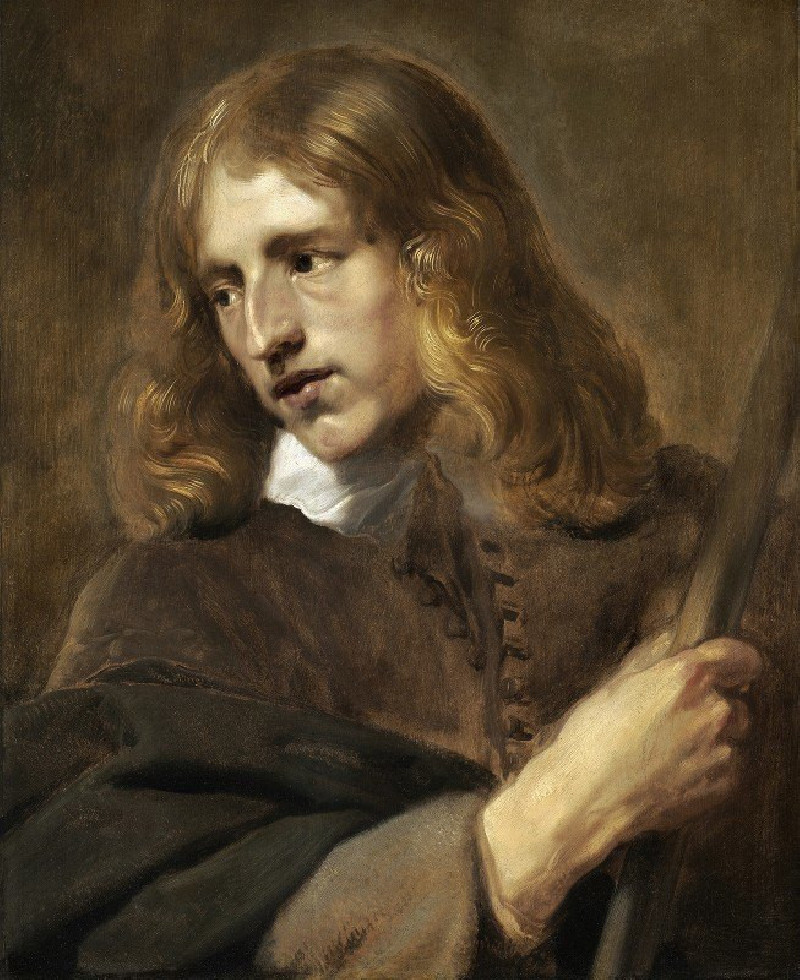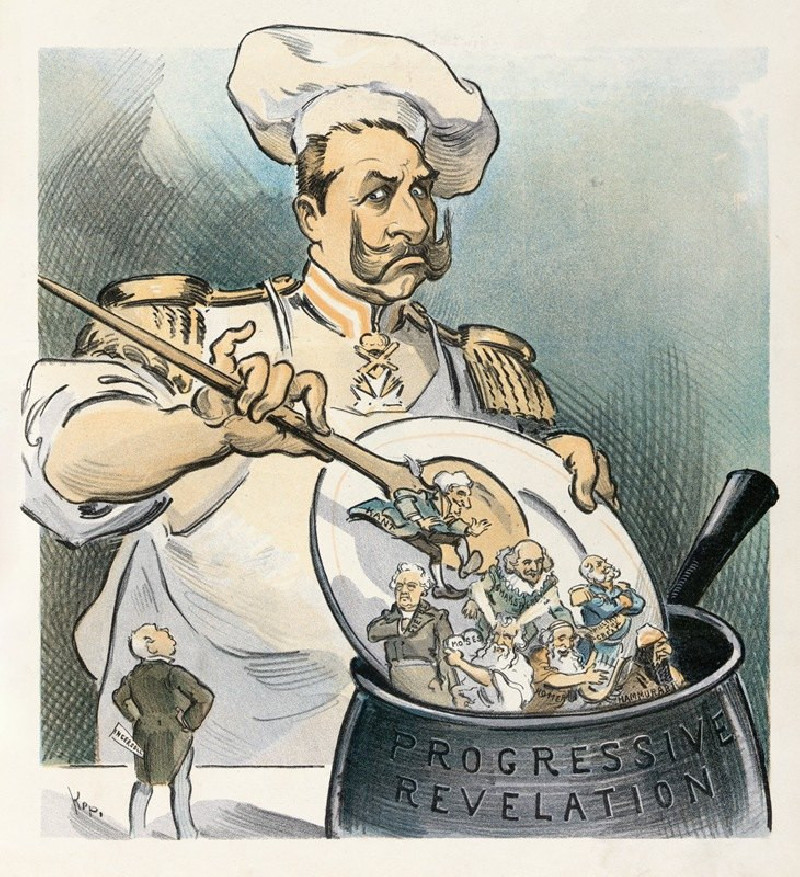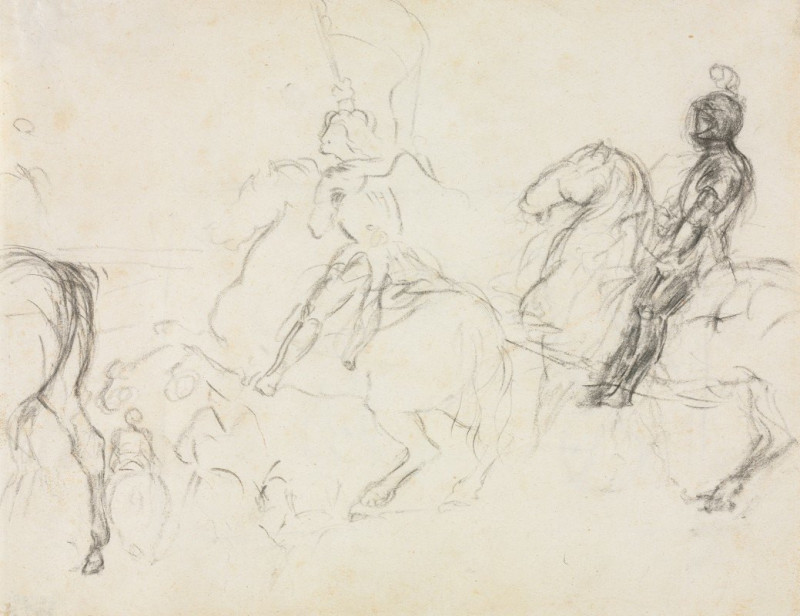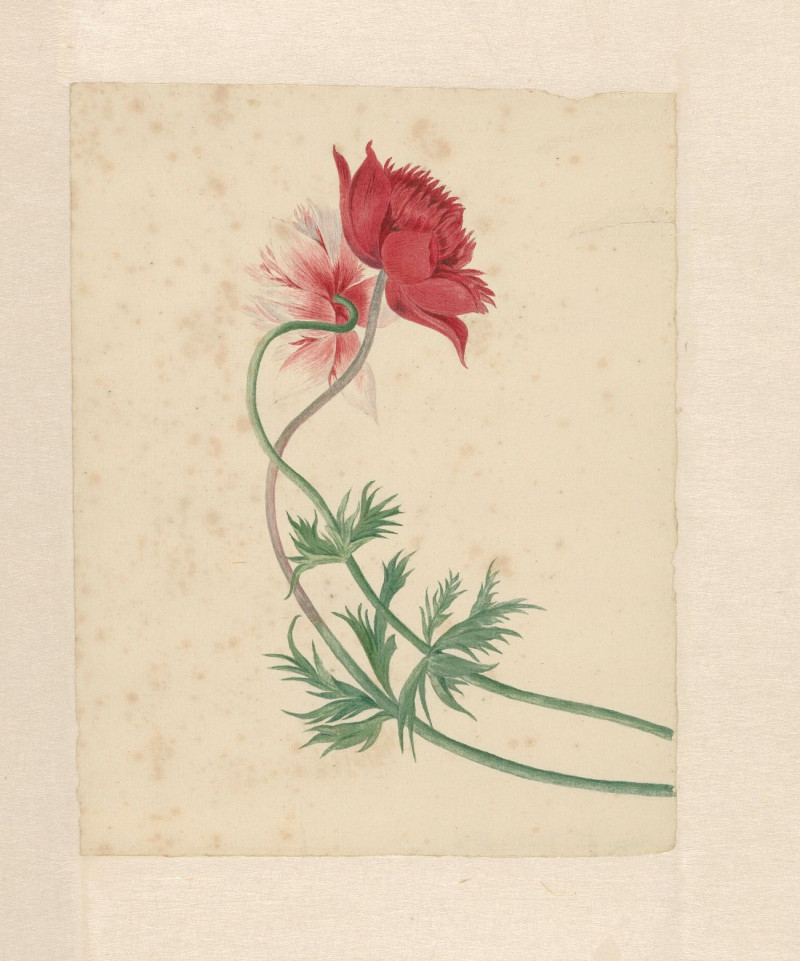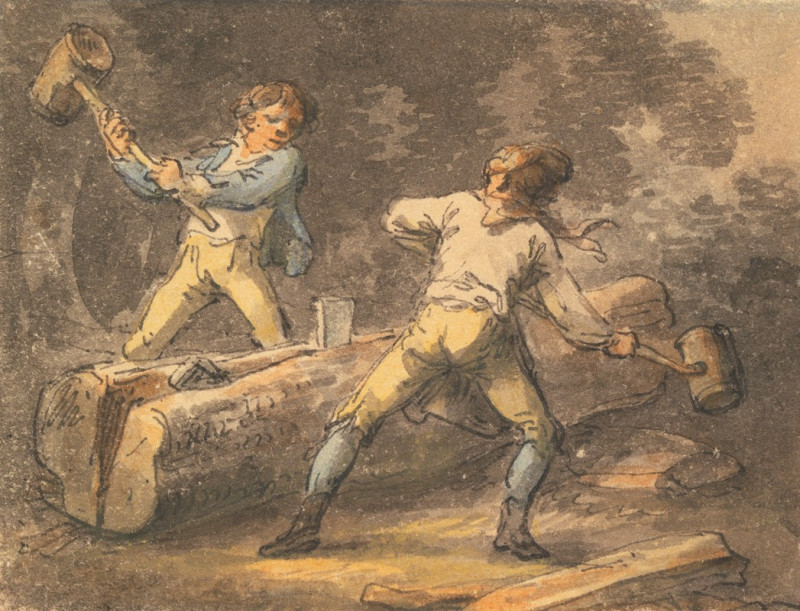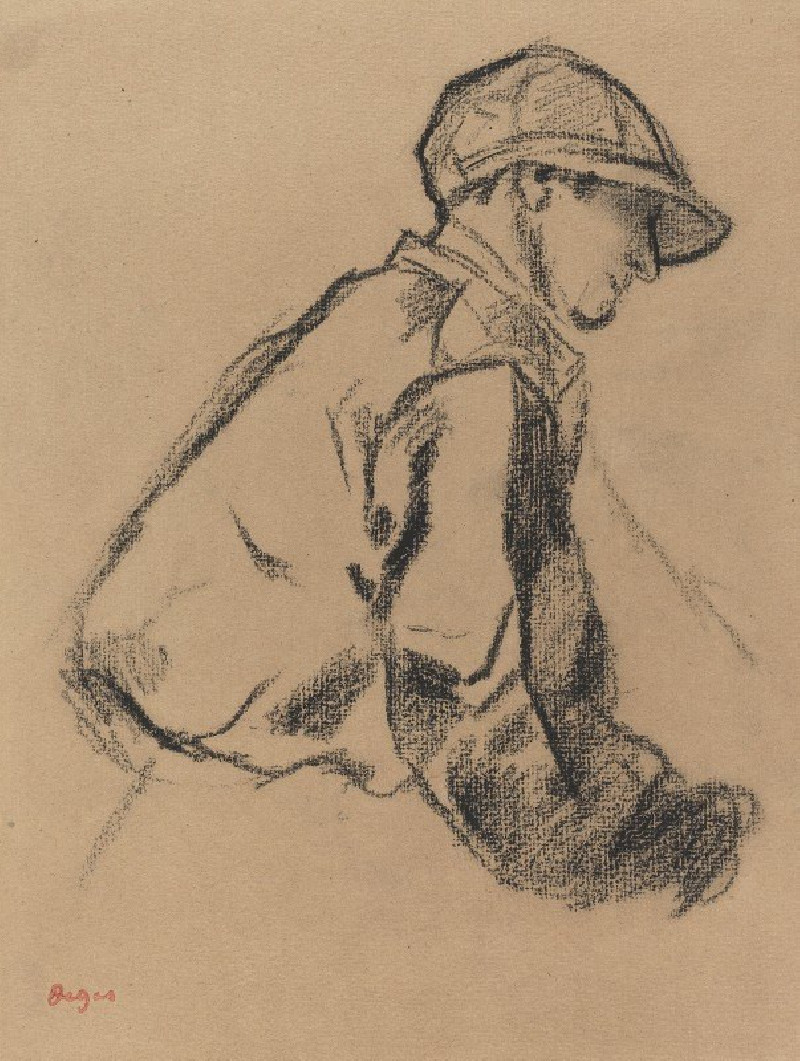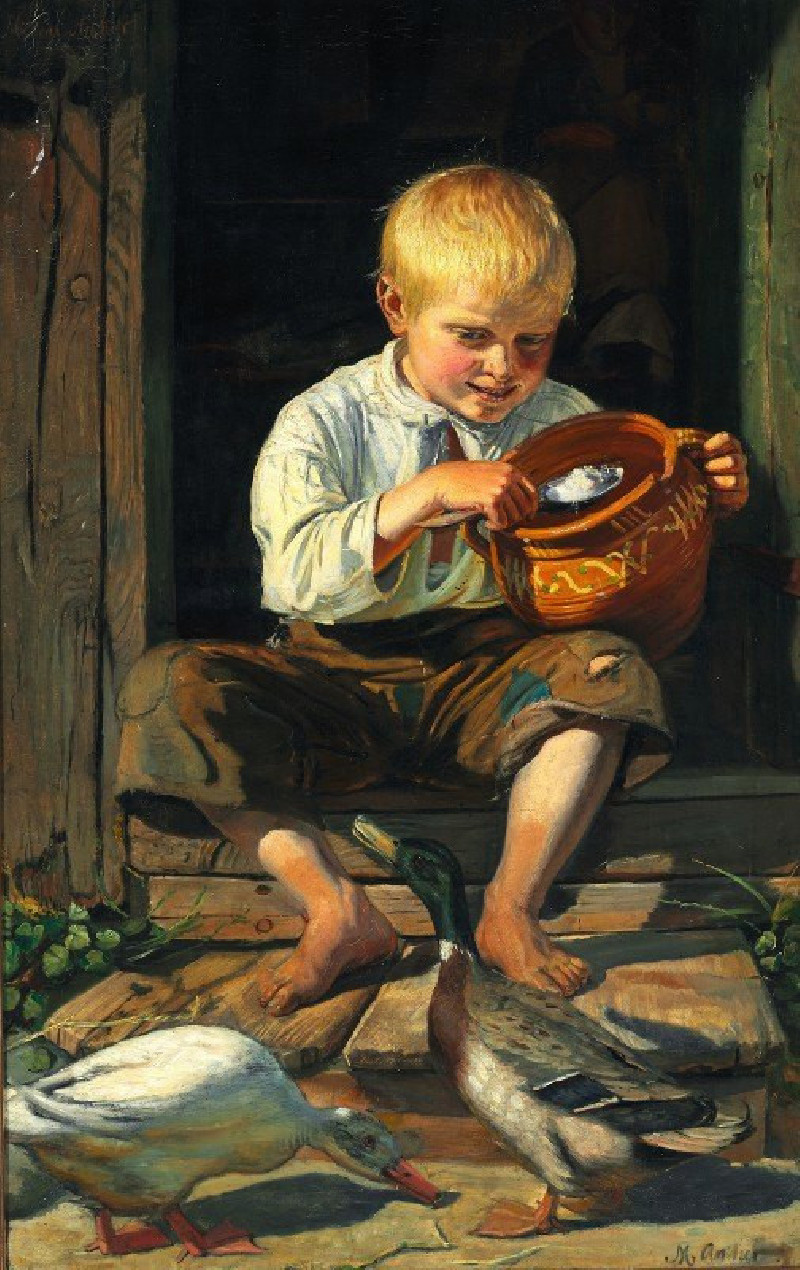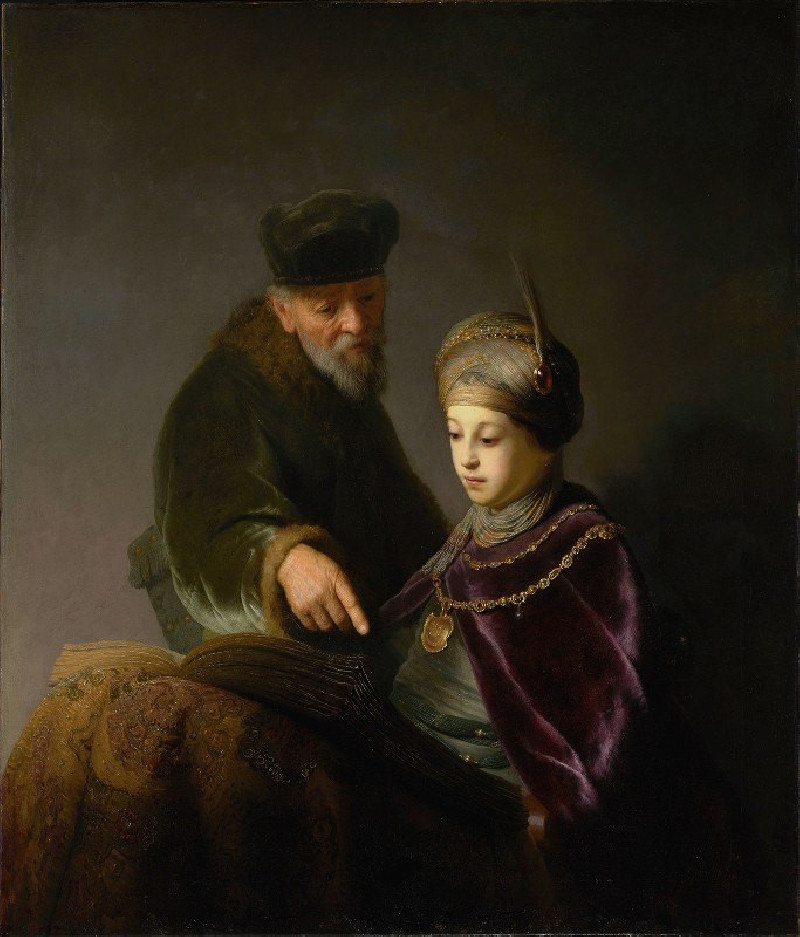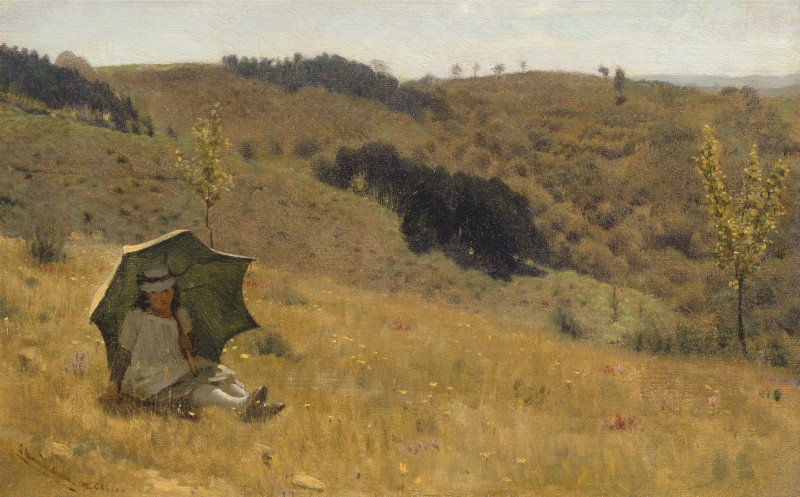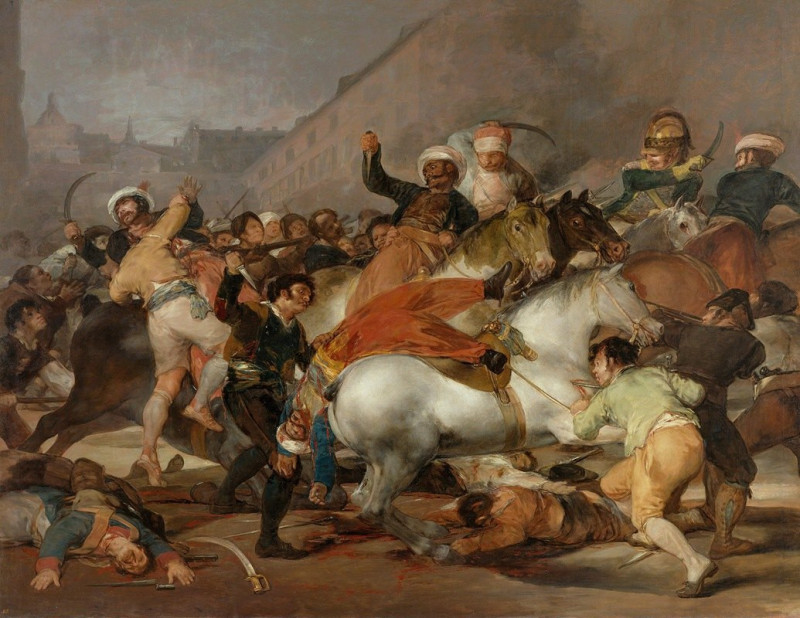Choix des plus belles fleurs pl 004 (1827)
Technique: Giclée quality print
Recommended by our customers
More about this artwork
We are delighted to showcase a captivating work by the esteemed botanical artist Pierre Joseph Redouté, titled "Choix des plus belles fleurs pl 004" from 1827. This exquisite painting portrays the delicate beauty of the Hibiscus syriacus, commonly known as the Rose of Sharon. Redouté's masterful use of watercolor brings to life this elegant flower. The painting features two prominent blooms, characterized by their large white petals with striking crimson centers, gracefully set against a backdrop of rich green leaves and budding flowers.Renowned for his precision and attention to detail, Redouté's work not only captures the aesthetic beauty of the hibiscus but also serves an important historical record for botanical study. Each element in this intricate composition is rendered with such accuracy that it reflects the artist's passion for botanical art and his dedication to documenting the natural world.This piece, a perfect blend of art and science, is an enduring testament to Redouté's legacy as a pioneer in botanical illustration.
Delivery
Returns
Pierre-Joseph Redouté, was a painter and botanist from Belgium, known for his watercolours of roses, lilies and other flowers at Malmaison, many of which were published as large, color stipple engravings. He was nicknamed "the Raphael of flowers" and has been called the greatest botanical illustrator of all time.

